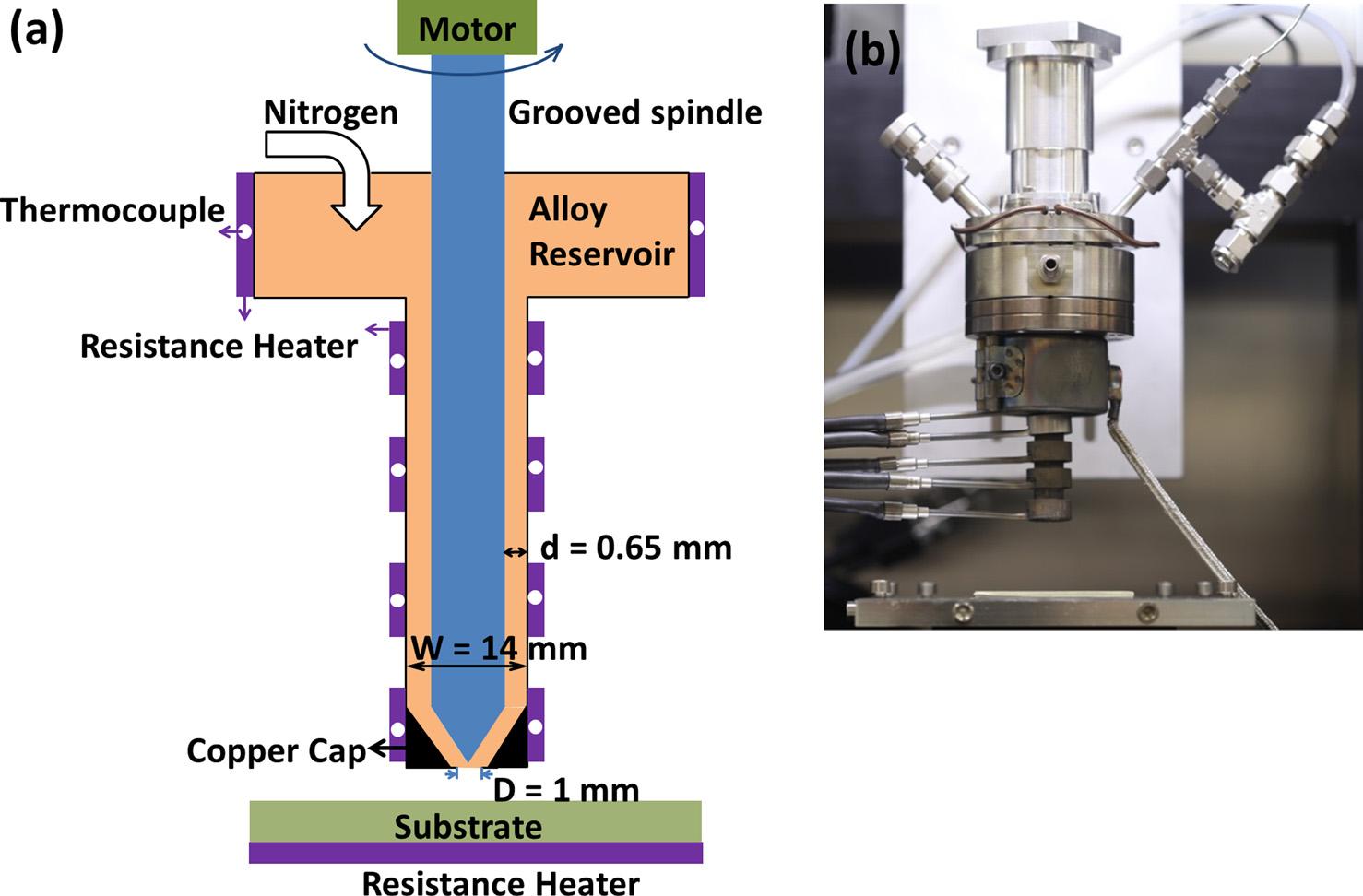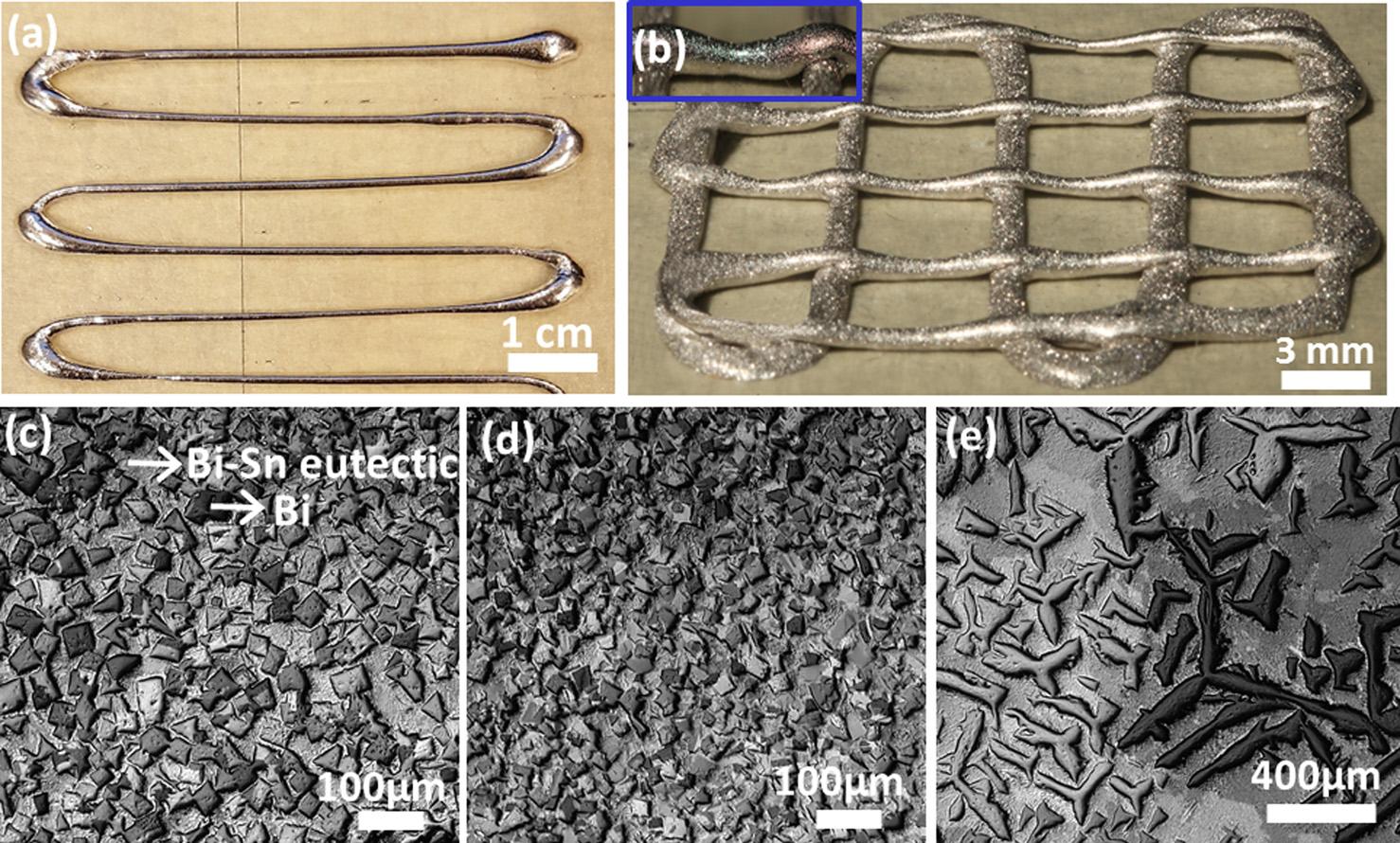US federal research facility, Lawrence Livermore National Laboratory (LLNL) has announced the results of an ongoing three-year research project into direct metal 3D printing. The technology, referred to as ‘Direct Metal Writing’ (DMW) adds to existing metal additive solutions such as selective laser melting (SLM). The technology was developed in collaboration with Worcester Polytechnic Institute, Massachusetts.
Unlike SLM, the DMW method eliminates the need for high powered lasers to sinter metal and form 3D structures. The researchers believe their novel process has benefits over more conventional metal additive manufacturing techniques in terms of reliability of the parts produced.

Direct Metal Writing
The new approach uses semi-solid metal feed material, beginning with a heated ingot or small block of metal. Once heated to a semi-solid state, the metal is then pushed through the extruder in a paste-like consistency. The material is shear thinning, which means it forms as a solid when left to rest and acts more like a viscous liquid when in motion or when applied with force.
The University of Sheffield is similarly exploring alternative metal 3D printing techniques, however their approach is to increase the number of lasers to speed up the approach.
LLNL engineer Andy Pascall, explains the DMW process,
You need precise control of the temperature. How you stir it, how fast you stir it, all makes a difference. If you can get the flow properties right, then you really have something. What we’ve done is really understand the way the material is flowing through the nozzle. Now we’ve gotten such good control that we can print self-supporting structures. That’s never been done before.

Overcoming challenges of SLM
The laboratory explain this new technique could overcome some of the challenges faced by SLM, in particular regarding porosity or creating parts with deformities or gaps. The researchers also state this approach could then mitigate the need for extensive analysis of 3D printed parts. Currently, the DMW has been working with a bismuth-tin material and still requires refining before it can be implemented for industrial materials like titanium and aluminium. The bismuth-tin mixture has a low melting point and is therefore easier to use with this technique. However, according to the laboratory, they have already begun working with aluminium materials.
Staff scientist Luke Thornley, who worked on material engineering in this project, explains the importance of DMW,
So much of the work that goes into validation and analyzing for defects would be eliminated. We can use less material to make parts, meaning lighter parts, which would be big for aerospace.

Impact on the metal powder market?
The DMW technique by Lawrence Livermore National Laboratory eliminates the need to use metal powders. The metal powder market is becoming increasingly competitive. Canadian company, PyroGenesis has recently re-entered the market to cater to the high-demand for the 3D printing materials.
While the direct metal writing method is promising, it has a long way to go before it can replace SLM technology and disrupt this growing metal powder market. 3D Printing Industry just visited British powder manufacturers Metalysis as they opened their new R&D facility in South Yorkshire.
The lead author of the research, materials scientist Wen Chen materials scientist, says
We’re in new territory, we’ve advanced a new metal additive manufacturing technique that people aren’t aware of yet. I think a lot of people will be interested in continuing this work and expanding it into other alloys.
The paper, titled ‘Direct metal writing: Controlling the rheology through microstructure’ has been published in Applied Physics Letters.
If you haven’t already, make sure you vote in the 3D Printing Industry Awards.
For the latest metal additive manufacturing news, sign up to our newsletter and follow us on twitter.
Featured image shows the direct metal writing nozzle. Photo by Kate Hunts for the LLNL.



